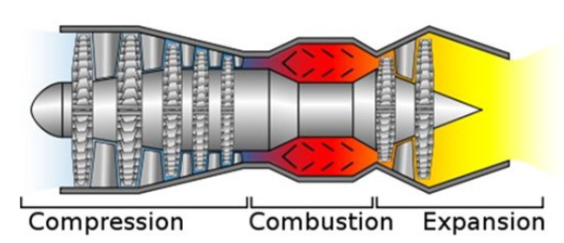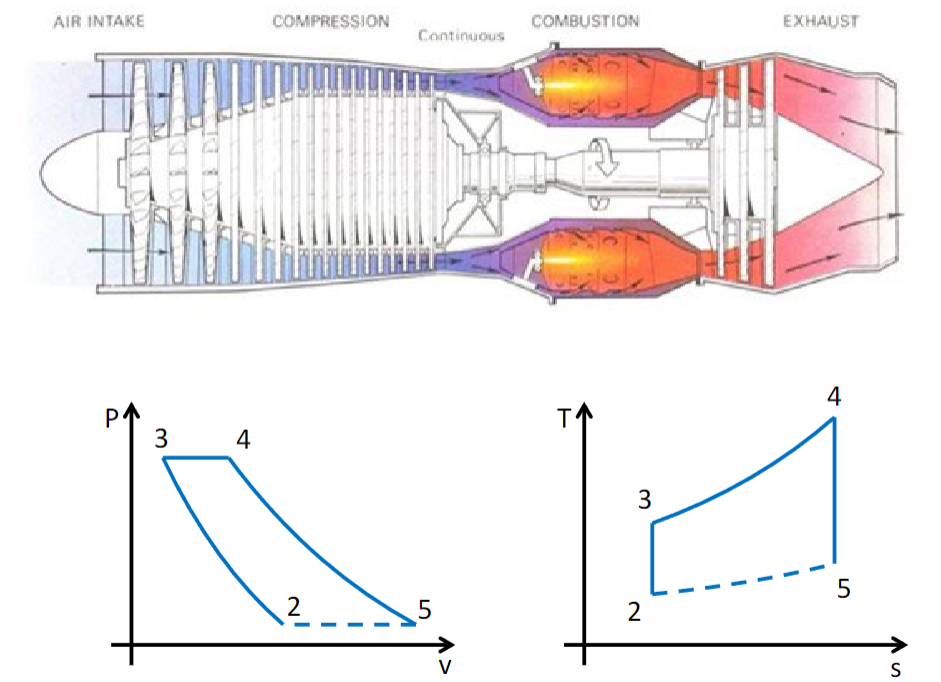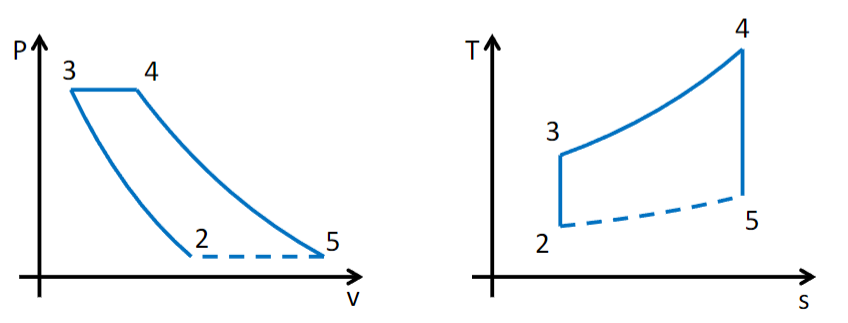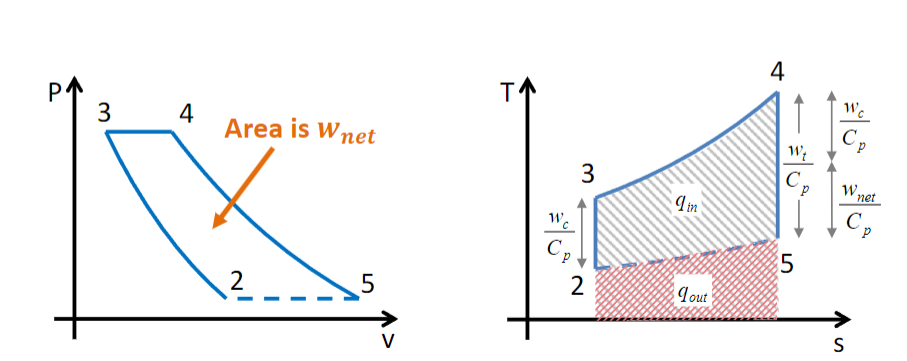Gas Turbine Engines
History
Created by George Brayton.
Components


Brayton Cycle:
Ideal Brayton Cycle

Stages:
Compressor:
- Increase pressure
- Isentropic Compression
Combustion Chamber:
- Fuel injection/heat addition
- Constant Pressure
Turbine:
- Extract work
- Isentropic Expansion
Nozzle:
- Reject entropy/heat (close cycle)
- Constant Pressure?
Control Volume:
- Not Control Mass/system.
- Steady State operation

First Law of Thermodynamics:
| Process | Specific Entropy |
|---|---|
Second Law of Thermodynamics:
| Process | Temperature | Specific Volume |
|---|---|---|
Pressure Ratio:
Assumptions:
- Negligible changes in kinetic energy
- (General case in ME 11b)
Works:
| Stage | Specific Work |
|---|---|
| Compressor | |
| Turbine | |
| Net |
Heat:
- Combustion chamber
Thermal Efficiency:
- Not a function of any temperature
- Independent of heat added

Real Brayton Cycle
Thermal Efficiency:
- Temperature Ratio:
- Pressure Ratio:
Best Conditions:
- Large pressure ratio
- Better efficiency but low net power
- Large
- Better efficiency but more net power
Examples:
Military Aircraft:
- High thrust, low efficiency
Civilian Aircraft:
- Low thrust, high efficiency
Importance of
Variations over flight:
- Take off
- Top of climb
- Melting point of turbine blade
- Cruise
- Safe zone for sustainability
Blade lifetime limited by:
- Creep
- Material Extension (high T)
- Oxidation
- Thermal Fatigue